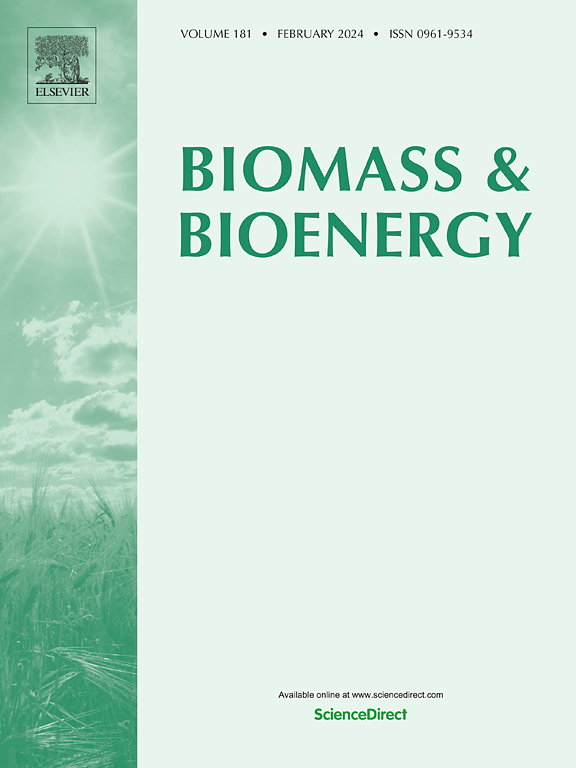Bio-aromatics: Revolutionizing the integrated biomass and plastic waste valorization for high-value aromatic hydrocarbons via bifunctional catalytic pathways of bio-syngas conversion
IF 5.8
2区 生物学
Q1 AGRICULTURAL ENGINEERING
引用次数: 0
Abstract
Aromatic hydrocarbons play a pivotal role in various industrial applications, serving as essential building blocks to produce polymers, resins, and specialty chemicals. Traditionally, their synthesis has been reliant on fossil fuels, raising concerns about environmental sustainability and resource depletion. However, recent advancements in the field have paved the way for a paradigm shift, with a focus on biomass-derived synthesis gas as a renewable and environmentally friendly feedstock. This review explores innovative shortcuts in the synthesis of aromatic hydrocarbons, a key area of research that holds promise for a more sustainable and efficient future. As we delve into the intricacies of biomass-derived synthesis gas conversion, we will examine breakthroughs in catalyst development, process optimization, and integrated approaches. By scrutinizing these advancements, we aim to provide a comprehensive overview of the current state of the art, highlighting both challenges and opportunities for further exploration. The urgency of addressing environmental concerns and the growing demand for renewable alternatives underscore the importance of reevaluating the methodologies. The unique characteristics of biomass-derived synthesis gas coupled with co-gasification processes present an intriguing avenue for redefining the landscape of aromatic hydrocarbon synthesis. Through this exploration, we seek to unravel the complexities of these innovative shortcuts, offering insights that may contribute to a more sustainable and greener future for the chemical industry.

求助全文
约1分钟内获得全文
求助全文
来源期刊

Biomass & Bioenergy
工程技术-能源与燃料
CiteScore
11.50
自引率
3.30%
发文量
258
审稿时长
60 days
期刊介绍:
Biomass & Bioenergy is an international journal publishing original research papers and short communications, review articles and case studies on biological resources, chemical and biological processes, and biomass products for new renewable sources of energy and materials.
The scope of the journal extends to the environmental, management and economic aspects of biomass and bioenergy.
Key areas covered by the journal:
• Biomass: sources, energy crop production processes, genetic improvements, composition. Please note that research on these biomass subjects must be linked directly to bioenergy generation.
• Biological Residues: residues/rests from agricultural production, forestry and plantations (palm, sugar etc), processing industries, and municipal sources (MSW). Papers on the use of biomass residues through innovative processes/technological novelty and/or consideration of feedstock/system sustainability (or unsustainability) are welcomed. However waste treatment processes and pollution control or mitigation which are only tangentially related to bioenergy are not in the scope of the journal, as they are more suited to publications in the environmental arena. Papers that describe conventional waste streams (ie well described in existing literature) that do not empirically address ''new'' added value from the process are not suitable for submission to the journal.
• Bioenergy Processes: fermentations, thermochemical conversions, liquid and gaseous fuels, and petrochemical substitutes
• Bioenergy Utilization: direct combustion, gasification, electricity production, chemical processes, and by-product remediation
• Biomass and the Environment: carbon cycle, the net energy efficiency of bioenergy systems, assessment of sustainability, and biodiversity issues.
 求助内容:
求助内容: 应助结果提醒方式:
应助结果提醒方式:


